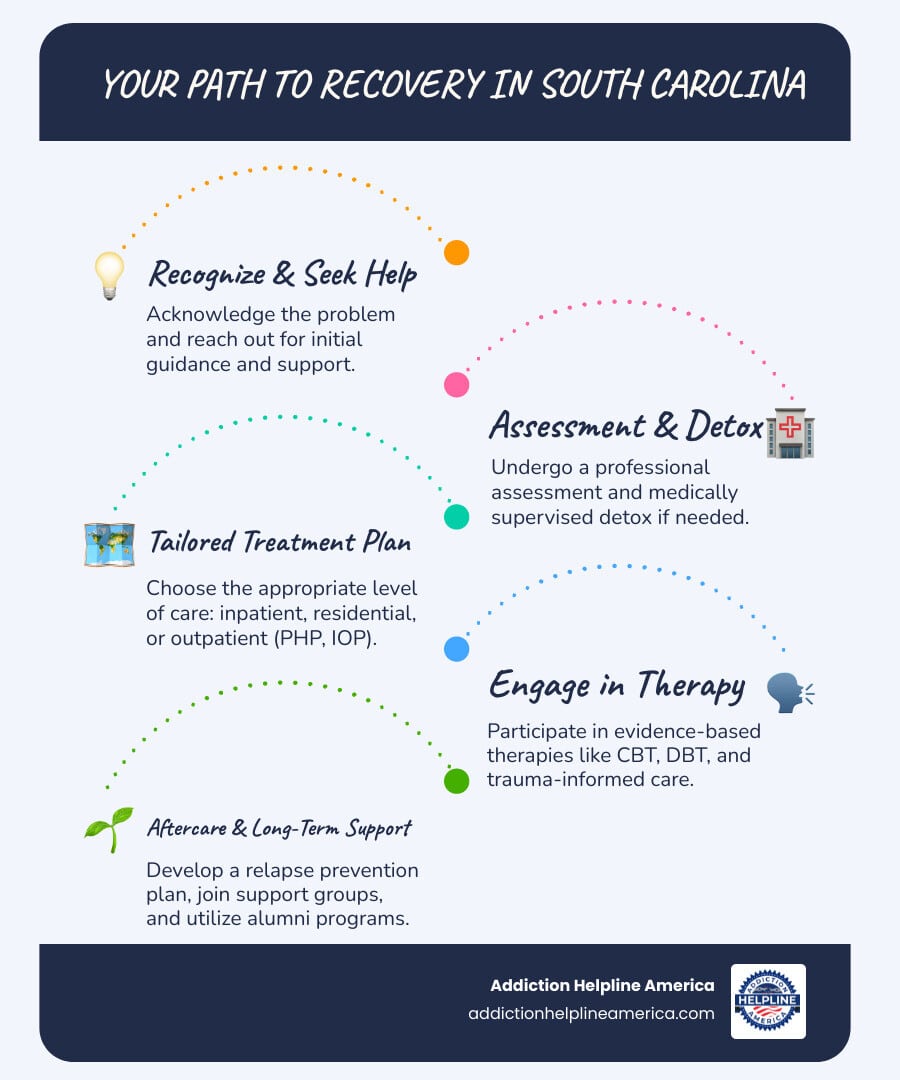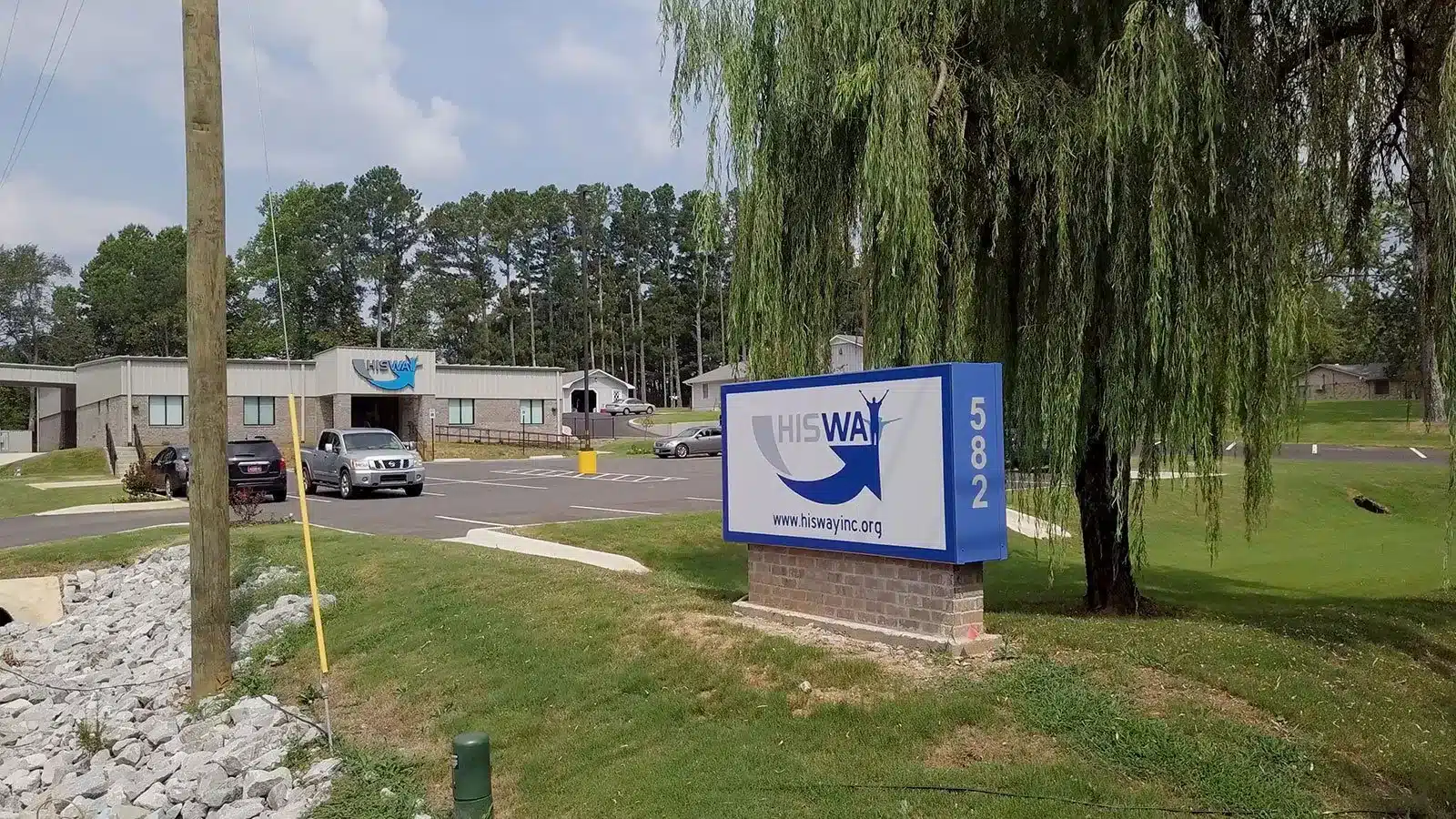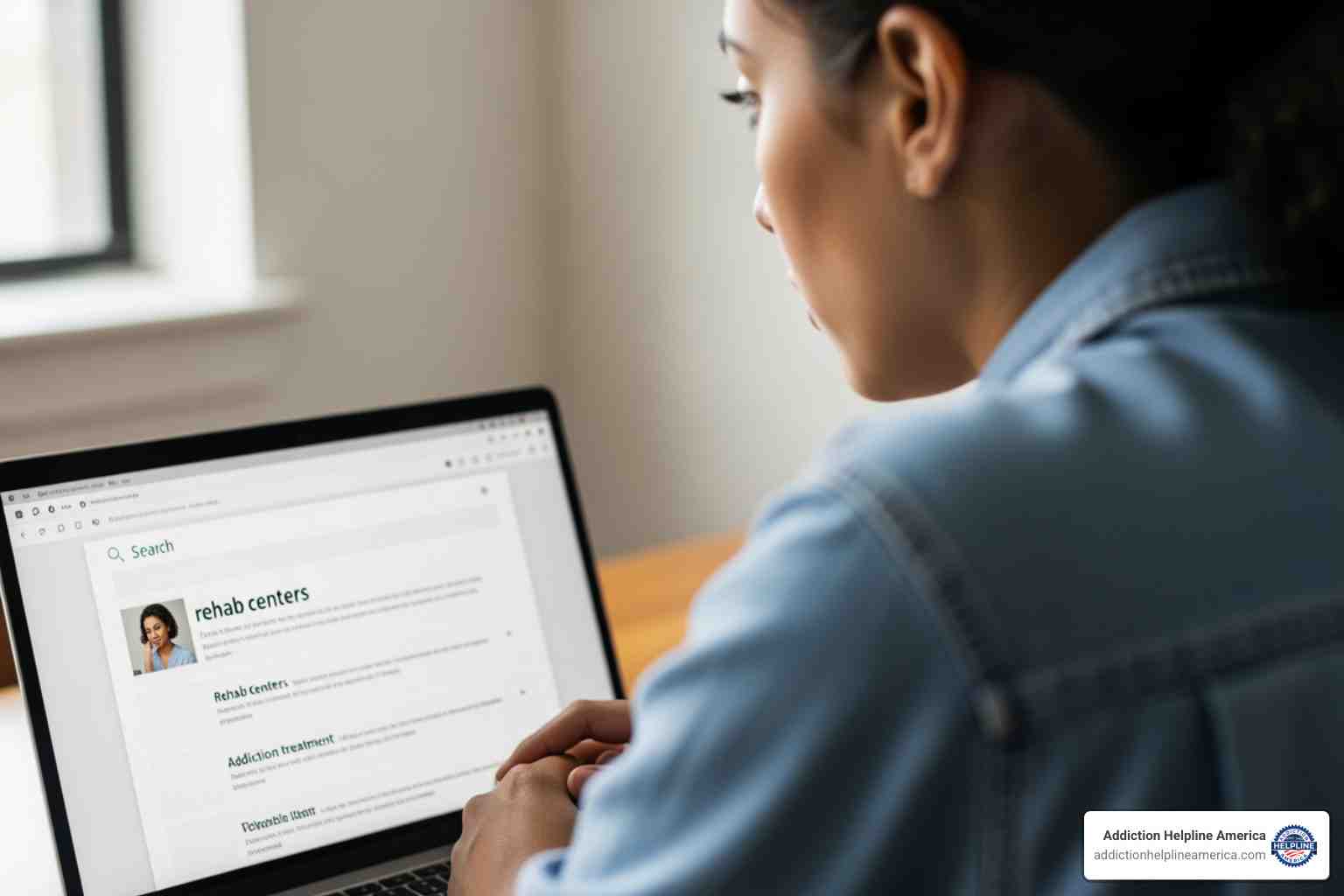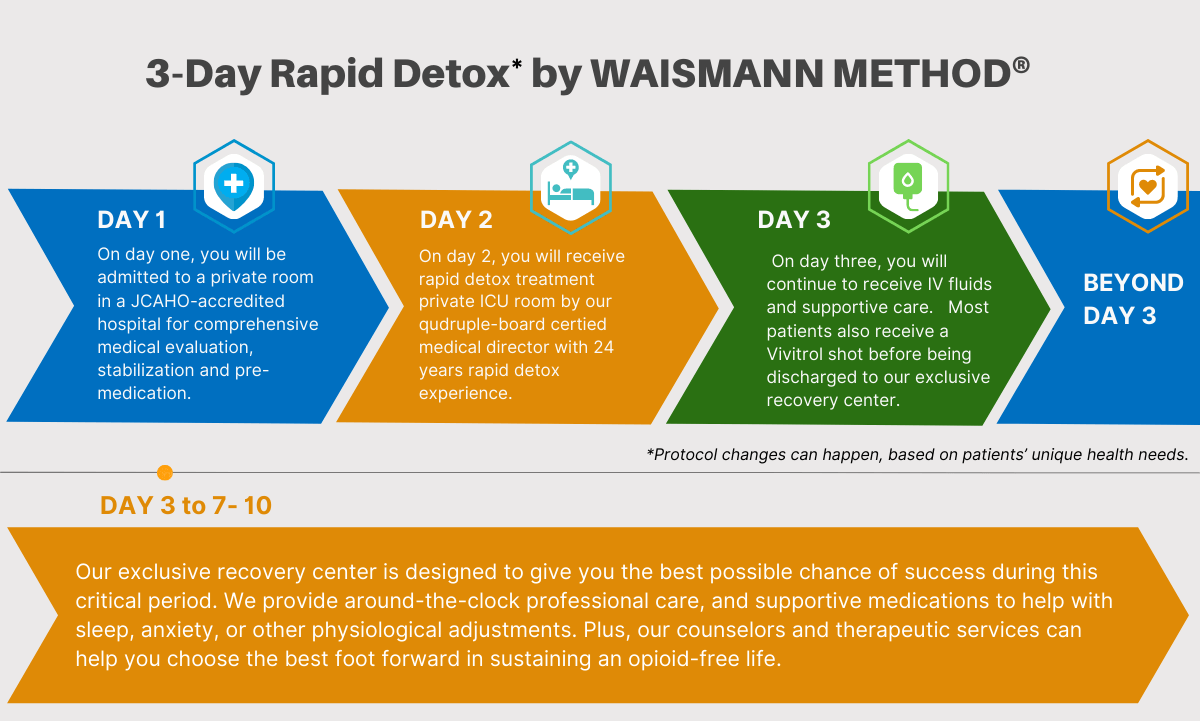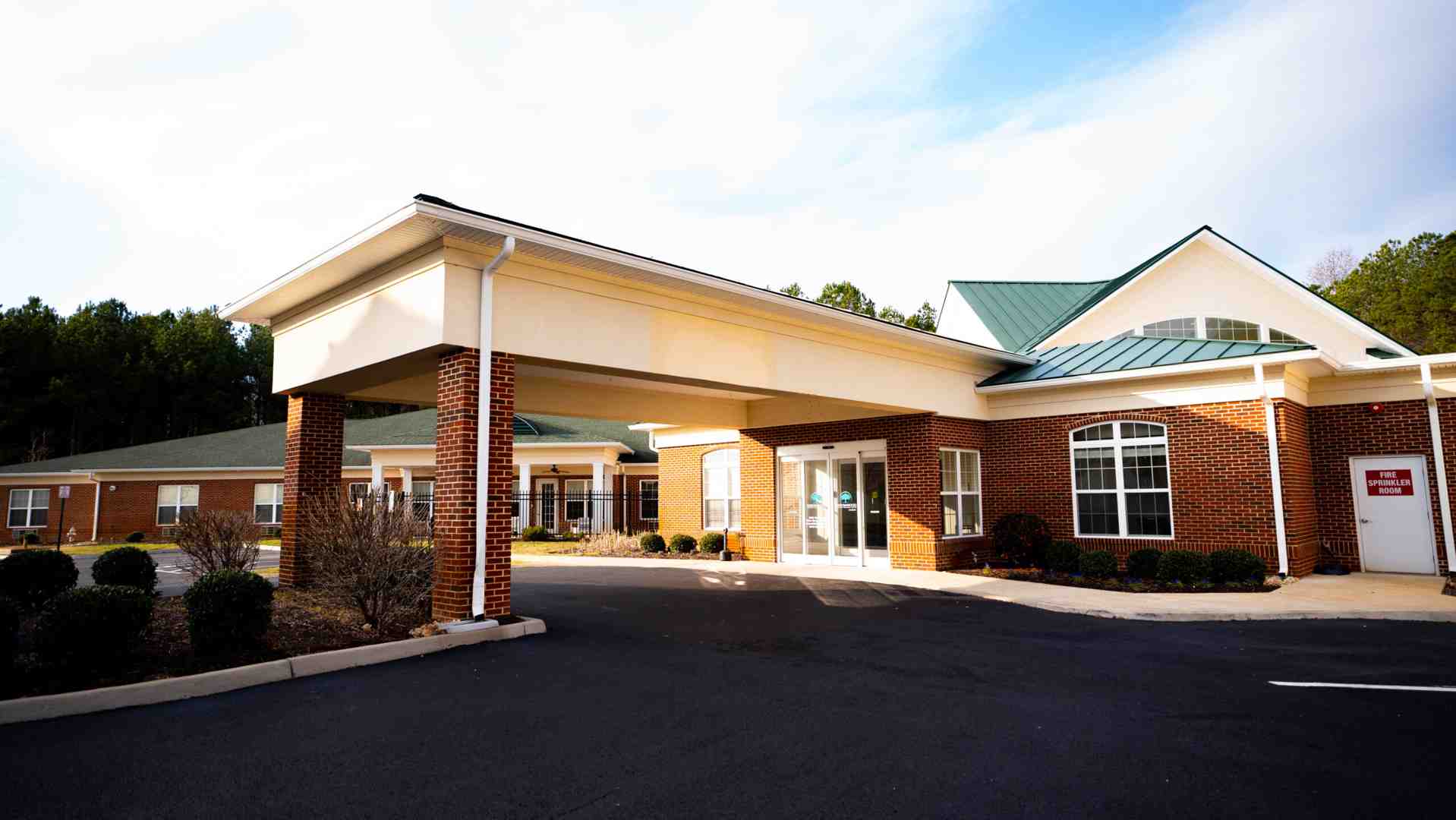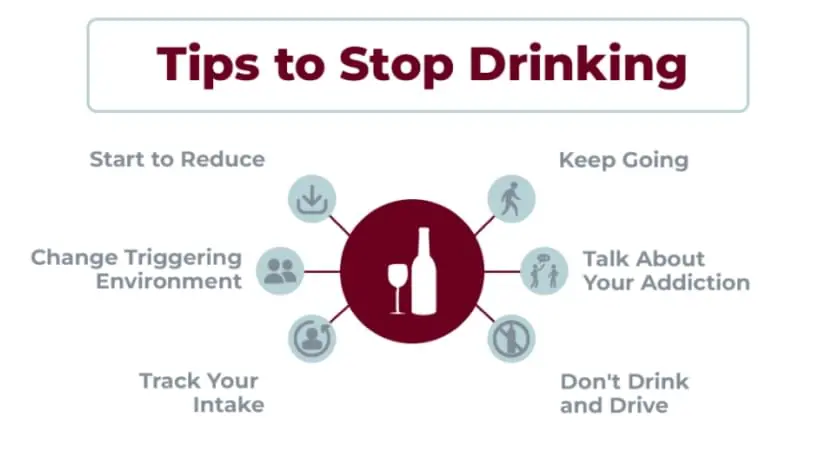
Figuring out how to stop drinking can feel like staring up at a mountain with no clear path. But the truth is, the very first step is much closer and simpler than you think. It all starts with a firm decision, telling someone you trust, picking a “quit date,” and getting your home ready for a new chapter. These first moves are what build the momentum you’ll need for the journey ahead.
Your First Move Toward a Life Without Alcohol
Taking that first real stride away from alcohol is, without a doubt, the most important one you’ll make. So many of us get paralyzed by trying to plan for every single what-if, but real change begins with a few immediate, concrete actions. Forget about getting it perfect. Right now, it’s all about building a strong foundation to stand on. And that starts with being brutally honest with yourself about why you want this change.
It’s also crucial to remember you’re not in this by yourself. Far from it. An estimated 400 million people around the world are dealing with Alcohol Use Disorder (AUD), a condition that touches the lives of about 7% of everyone aged 15 and older. The ripple effects are enormous, contributing to over 2 million deaths each year from related health problems like liver disease and cancer. These numbers aren’t here to scare you; they’re here to show you that what you’re facing is a shared human struggle. Reaching out for help is a sign of incredible strength. You can learn more about the global impact of alcohol use on The Supportive Care blog.
Define Your Reasons
Before you do anything else, grab a notebook or open a new note on your phone. I want you to write down, in detail, exactly why you want to quit drinking. Is it for your health? To repair relationships? To get your finances in order? To finally wake up without that soul-crushing hangover?
Don’t be vague. Get personal. Instead of just writing “for my health,” dig deeper. Maybe it’s “to have the energy to hike with my friends again” or “to stop worrying about what I might have said or done last night.”
Expert Tip: “This list of reasons is your anchor. It’s your personal “why.” Keep it somewhere you’ll see it every day—taped to your bathroom mirror, as your phone’s lock screen, or folded in your wallet. When your motivation starts to fade, and it will, this list will be your most powerful tool to get back on track.”
The image below breaks down these initial, essential moves: recognizing the problem, setting clear intentions, and reaching out for that first bit of support.
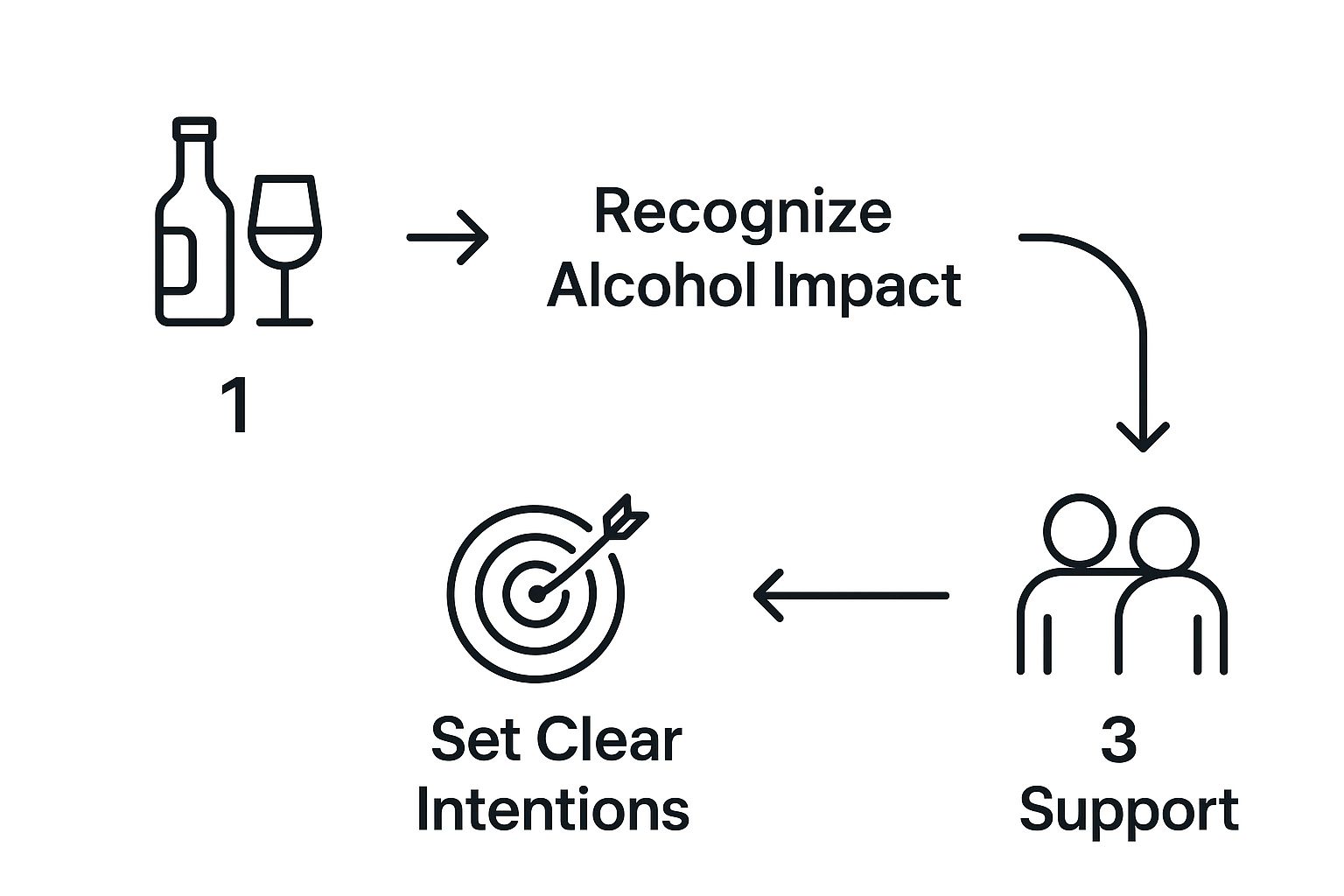
As you can see, quitting isn’t a single event. It’s a process that starts with an internal shift and moves outward into tangible actions.
To help you get started, here’s a simple action plan. Think of it as your first checklist for building a new foundation.
Your Initial Sobriety Action Plan
| Action Step | Why It Matters | Your First Move |
|---|---|---|
| Commit to a Quit Date | Setting a firm date creates a clear starting line and prevents procrastination. | Pick a date in the next 1-2 weeks. Circle it on a calendar. |
| Tell Someone You Trust | Vocalizing your goal makes it real and adds a layer of supportive accountability. | Call or text a trusted friend or family member and tell them your plan and your date. |
| Write Down Your “Why” | This list becomes your core motivation and a powerful reminder during tough moments. | Spend 15 minutes listing every specific reason you want to quit. Keep it visible. |
| “Sober-Proof” Your Home | Removing temptation from your environment is a critical first step for success. | Go through your home and discard all alcohol, glassware, and related items. |
This table isn’t just a list; it’s your first set of promises to yourself. Completing these actions will give you an immediate sense of control and accomplishment.
Set a Date and Tell Someone
Now, let’s make it official. Choose a specific date within the next week or two to stop drinking for good. Picking a day that’s too far in the future gives you an excuse to put it off, but one that’s too soon might not give you enough time to mentally and physically prepare. A week from Tuesday? Perfect.
Once you have your date, tell at least one person you truly trust. This could be a supportive partner, a non-judgmental friend, or a close family member. Just saying the words out loud to another person makes the commitment feel real. You don’t need a public service announcement—just one ally who will be in your corner, ready to cheer you on.
Call Now – Your Journey to Recovery Begins Today!
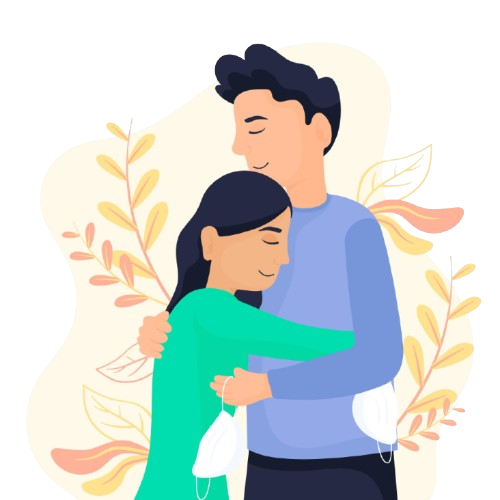
Take the first step towards a healthier life! Call now to connect with our compassionate team and start your recovery journey today. Your path to healing awaits!
Our recovery specialists are available 24/7 to provide support, and all calls are confidential and free. Reach out anytime – we’re here to help!
Building Your Personal Support System
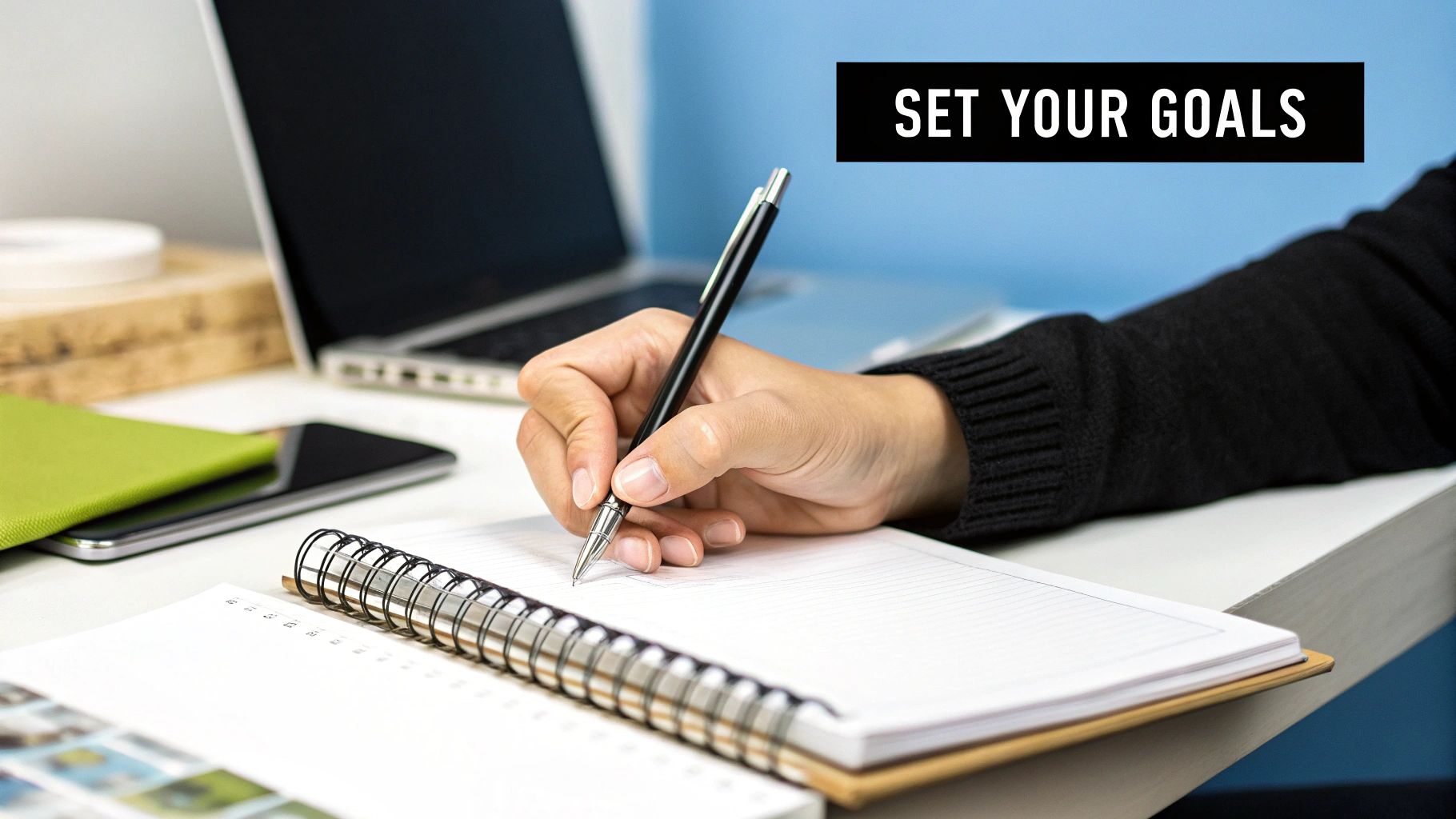
Let’s be honest: trying to quit drinking all on your own is incredibly tough. I’ve seen it time and again. Willpower is a huge part of the puzzle, but it’s not the whole picture. Real, lasting sobriety is almost always built on a foundation of solid support.
This means more than just telling your best friend you’re quitting. It’s about intentionally building a team of people who truly get it and are ready to back you up. Think of it as your personal safety net, one that includes not just your inner circle but also professionals and peers who’ve been in your shoes.
Talking to Friends and Family
Your loved ones can be your biggest cheerleaders, but they aren’t mind readers. They want to help, but often have no idea how. It’s up to you to show them the way.
Start by picking one or two people you trust completely—someone who listens without judgment. Find a quiet, sober moment to sit down and be real with them. Explain what you’re doing and, more importantly, what you need from them.
“Don’t just say, “I need your support.” Be specific. Try something like, “It would mean a lot if we could hang out without alcohol for a bit. Maybe we could catch a movie or go for a hike instead of hitting a bar?”
This small shift in how you ask can make all the difference. You’re giving them a clear, actionable way to help.
Here are a few ways to set them up for success:
- Give them a job: Ask them to be the person you can text when a craving hits. This is much more helpful than asking them to be your personal watchdog.
- Set clear boundaries: It’s okay to ask them not to drink around you or offer you a beer out of habit. A simple, “Hey, could you help me out by keeping alcohol out of sight when I’m over?” works wonders.
- Help them understand: Suggest they do a little reading on what sobriety is like. When they understand the ‘why’ behind your requests, they’ll be much better allies.
Looking Beyond Your Inner Circle
Friends and family are essential, but they can’t be your only support. This is where professional help and peer groups come in. They fill a different, but equally important, role. A therapist who specializes in addiction can give you tools to manage triggers and dig into the reasons you started drinking in the first place.
At the same time, there’s a unique power in talking to someone who has walked this same path. Peer support groups offer a level of understanding that you just can’t get anywhere else. Hearing from people who have successfully quit provides real-world advice and, most importantly, hope.
Different Groups for Different People:
- Alcoholics Anonymous (AA): The most well-known option, AA is a 12-step fellowship that has helped millions.
- SMART Recovery: If you prefer a more scientific approach, this group uses cognitive-behavioral techniques to help you manage your own recovery.
- LifeRing Secular Recovery: This is a non-spiritual option that empowers you to build a personal recovery plan that works for you.
Finding the right fit is key, so don’t be afraid to try a few different meetings. To see what’s in your area, you can browse a directory of addiction support groups near you.
Think of it this way: you are the general manager of your own recovery team. By combining the love from your family, the strategies from a professional, and the shared experience from your peers, you build a network that makes this journey feel a lot less lonely and far more possible.
Preparing Your Environment for Sobriety
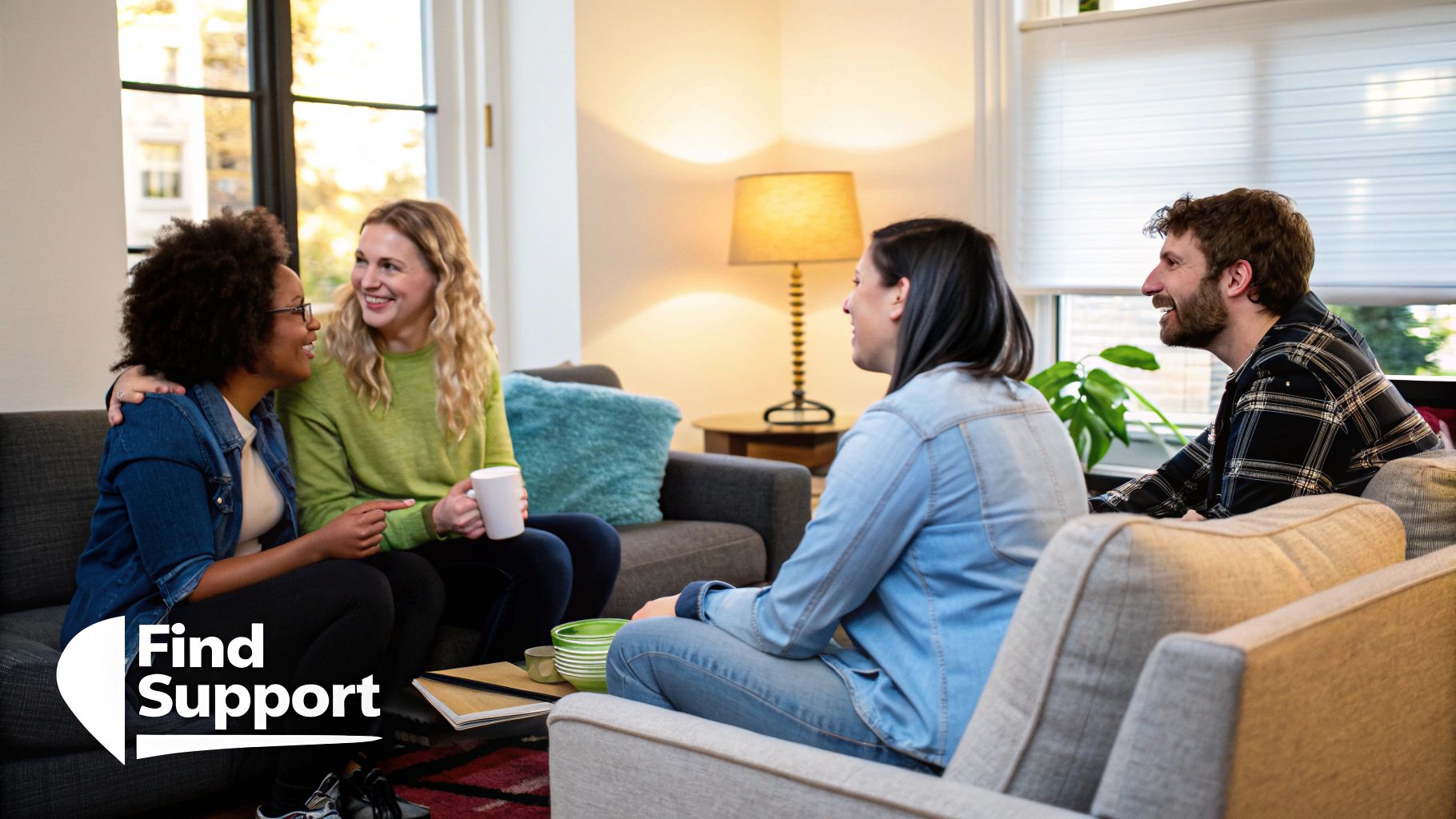
Let’s be honest: just deciding to quit drinking rarely works on its own. If you want to succeed, you have to get practical and tactical. That means intentionally shaping your surroundings to support this massive, positive change you’re making.
We call this sober-proofing, and it’s one of the most powerful things you can do in early recovery.
Think of your home as your sanctuary, your safe harbor. Right now, it’s probably full of triggers and reminders of your old habits. The goal is to transform it into a space where sobriety can actually take root and grow, free from the constant pull of temptation. It’s all about making the right choice the easy choice.
This isn’t just about tossing out bottles. It’s about looking ahead, anticipating those tough moments, and having a solid plan in place before they even have a chance to knock you off course.
Sober-Proofing Your Home
The first, most crucial step is getting all the alcohol out of your home. And I don’t mean hiding it in a closet for a “just in case” moment. That’s a trap. Pour it down the drain. Give it away. Get it out of your house, for good. This one action is a bold statement to yourself that you are serious about this.
But don’t stop there. Alcohol’s influence extends to all the things associated with it. Think about getting rid of:
- Glassware and Barware: Those special wine glasses, your favorite beer stein, cocktail shakers—these things hold powerful psychological weight. Box them up for storage or, even better, donate them.
- Decor and Branding: That beer sign in the garage or the branded coasters on the coffee table? They’re subtle, subconscious ads for drinking. Take them down.
- Drinking Spots: We all have them. The specific chair where you’d have a drink, that corner of the patio… it’s time to reclaim that space. Put a new plant there, add a reading lamp, or throw a new blanket over the chair. Change its purpose to break the old association.
This isn’t about trying to erase your past. It’s about giving your future a clean slate to build upon.
Building New Daily Routines
Your days were likely structured around drinking in ways you might not even realize. The glass of wine while making dinner, the beer right after walking in the door from work, the cocktails that signaled the start of the weekend. If you simply remove the alcohol without replacing the ritual, you’ll be left with a gaping void that makes relapse feel almost inevitable.
You have to build new routines to fill those gaps.
For example, if the stress of getting home from a long workday was your primary trigger, brainstorm a new “wind-down” ritual. Instead of pouring a drink, you could:
- Kick off your work shoes and immediately go for a quick 15-minute walk around the block.
- Brew a calming cup of herbal tea and put on a podcast you love.
- Spend ten minutes doing some gentle stretching or following a guided meditation on your phone.
“The secret is having a pre-planned, healthy replacement ready to go. When a craving hits, you don’t have to think or debate—you just execute your new plan. This takes the heavy burden of decision-making off your shoulders when you’re feeling most vulnerable.”
It’s also worth recognizing that outside pressures are real. Some countries, like Russia, report alcohol consumption as high as 16.8 liters of pure alcohol per person each year, which dwarfs the global average of 5.8 liters. Knowing that these cultural and environmental forces exist helps you see why creating your own sober-friendly environment is so critical. You can explore more on these trends by checking out global alcohol consumption patterns on World Population Review.
Assembling Your Sobriety Toolkit
Think of this as your emergency go-bag for recovery. A sobriety toolkit is a physical or digital collection of resources you can grab the second a craving feels overwhelming or a bad day threatens your resolve.
Every person’s toolkit will look a little different, but there are some essentials everyone should have:
- A Lifeline List: The phone numbers of your support crew. This could be a sponsor, a therapist, a trusted friend, or a family member you can call or text without judgment.
- Motivation on Demand: A written list of your reasons for quitting. A picture of your kids. A sticky note with a quote that fires you up. Anything that reminds you of your “why.”
- Healthy Distractions: A great book you’ve been meaning to read, a puzzle, a link to a guided meditation app, or an uplifting music playlist.
- Good Drinks!: Quitting alcohol doesn’t mean you’re stuck with water. Stock your fridge with things you actually enjoy, like high-quality sparkling water, kombucha, or the ingredients to make a really good mocktail.
Having this toolkit ready means you’re not just hoping for the best; you’re prepared for the fight. For more in-depth strategies on building out your support network, you can learn how to get addiction help and create a plan that truly works. By taking these steps, you make your environment your greatest ally, not your enemy.
Call Now – Your Journey to Recovery Begins Today!

Take the first step towards a healthier life! Call now to connect with our compassionate team and start your recovery journey today. Your path to healing awaits!
Our recovery specialists are available 24/7 to provide support, and all calls are confidential and free. Reach out anytime – we’re here to help!
Navigating Withdrawal and Cravings
Let’s be honest: the first few days and weeks after you stop drinking can be incredibly tough. This is when your body is screaming for a substance it’s grown used to, and that’s when withdrawal symptoms and intense cravings show up. It’s a critical period, and getting through it successfully hinges on having a solid plan.
First things first, we need to talk about safety. Alcohol withdrawal isn’t always just a bad hangover. For people who have been drinking heavily for a long time, stopping cold turkey can be genuinely dangerous. If you start experiencing severe symptoms—things like shaking uncontrollably (tremors), seeing things that aren’t there (hallucinations), or having seizures—you need to seek immediate medical attention. This isn’t something to tough out. For most people, however, the symptoms will be unpleasant but manageable with the right approach.
Understanding Cravings
A craving is more than just wanting a drink; it’s a powerful, almost physical pull. It’s your brain reacting to old habits and triggers—maybe it’s the clock hitting 5 PM, a stressful meeting at work, or seeing friends at a bar. These urges can feel like they’ll last forever, but here’s the secret: they won’t.
Most cravings peak and fade much faster than you’d think, usually within 15 to 30 minutes. The real battle isn’t with the craving itself, but how you choose to respond to it. If you want to dive deeper into the science behind this, you can learn more about how long cravings last. The goal is to build a personal toolkit of coping strategies so you can ride out these urges without reaching for a drink.
“An urge is just a wave of energy in your body. It will rise, crest, and fall all on its own. Your job is not to fight the wave, but to learn how to surf it.”
I love this idea of “urge surfing.” It’s about noticing the craving as it builds, acknowledging it without judgment, and trusting that it will pass on its own. You don’t have to fight it—just let it move through you.
Actionable Strategies for Managing Cravings
The best time to plan for a craving is before it hits. When you’re in the middle of an intense urge, your rational brain isn’t really in charge. Having a few go-to strategies ready can make all the difference.
Here are a few tactics that have worked for countless people:
- Ground Yourself in the Moment: When a craving feels like it’s taking over, pull your focus back to the here and now. Try the 5-4-3-2-1 method: Name five things you can see, four things you can touch, three things you can hear, two things you can smell, and one thing you can taste. This simple sensory exercise breaks the obsessive thought cycle.
- Get Smart with Distraction: This isn’t about mindlessly scrolling through your phone. Find something that truly engages your brain. Work on a tricky puzzle, play a challenging game, or call a friend and talk about anything but drinking. Even diving into a chore you’ve been avoiding can shift your focus enough for the craving to pass.
- Play the Tape Forward: This is a powerful mental exercise. Instead of focusing on the immediate “relief” a drink might offer, think through what happens next. Picture the guilt, the shame, the inevitable hangover, and the feeling of having to start all over again. Really visualizing the full, negative picture weakens the craving’s appeal.
It’s also useful to remember why you’re doing this. The World Health Organization notes that, on average, drinkers worldwide consume about 27 grams of pure alcohol daily. That’s equivalent to about two standard glasses of wine or two beers. This level of intake is linked to over 200 different health problems, including cancer and heart disease. Keeping these facts in mind—you can explore the WHO’s data on alcohol consumption levels for more details—can be a powerful motivator. It reinforces that you’re not just giving something up; you’re gaining your health back.
Building a Fulfilling Sober Life
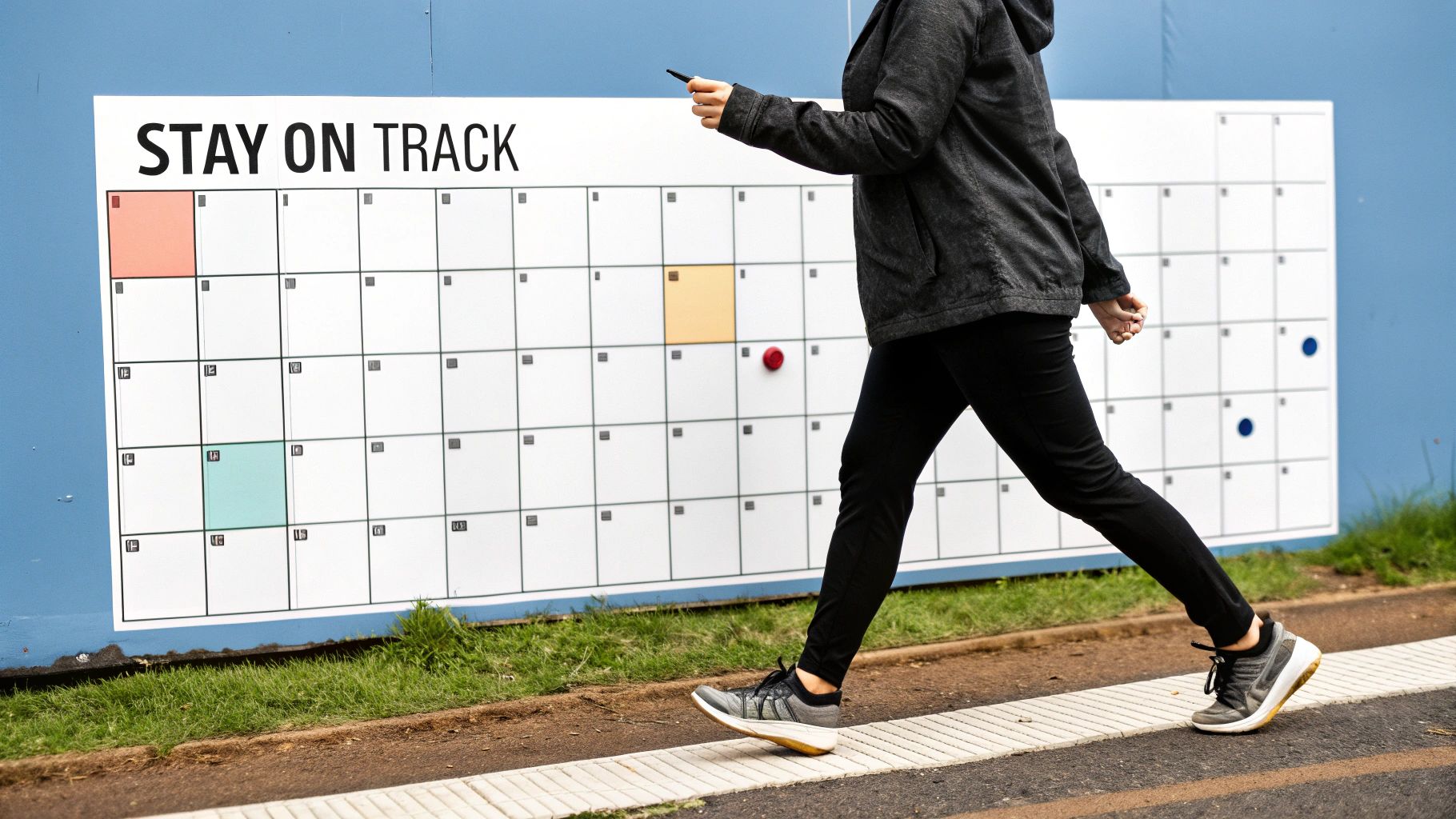
Let’s be honest: true sobriety isn’t just about not drinking. Anyone can white-knuckle their way through a few days or weeks. The real goal is to build a life that’s so genuinely good, so vibrant and engaging, that you no longer want to escape from it.
This is where the focus shifts from avoiding the bad to actively creating the good. You’re moving past just dodging triggers and instead, you’re hand-crafting new routines, rediscovering what makes you tick, and learning to walk through the world with a clear head. This is how you build a sobriety that lasts.
Navigating Social Situations with Confidence
For many people, one of the biggest tests in early sobriety is the social scene. Suddenly, weddings, holiday parties, and even casual work happy hours can feel like navigating a minefield. The secret weapon here is preparation. Go in with a plan.
You don’t owe anyone a long story or a detailed explanation. Having a few simple, pre-rehearsed responses ready will make a world of difference. It helps to say them out loud at home first, so they feel natural when you need them.
Here are a few scripts that work in the real world:
- Simple & Direct: “No thanks, I’m not drinking tonight.”
- Health-Focused: “I’m sticking with water, thanks. Focusing on my health right now.”
- Confident & Casual: “I’m all set, thanks! I’m driving.”
- The Quick Deflection: “Not for me, but I’d love to hear about your trip!”
“My best tip? Always have a non-alcoholic drink in your hand. A seltzer with lime or a cranberry and soda looks just like a cocktail. It dramatically cuts down on how many people will offer you a drink, letting you relax and blend in.”
Rediscovering Joy and Purpose
When drinking becomes a central activity, it has a way of slowly pushing everything else to the side. A massive, and honestly, exciting part of building a new sober life is reconnecting with old hobbies or having the courage to try something completely new.
Think back. What did you love to do before alcohol took up so much space? Maybe it was hiking, painting, playing guitar, or just getting lost in a good book. This is your chance to reclaim those pieces of yourself. If nothing immediately comes to mind, think of it as a grand experiment.
Ideas for Finding New Passions:
- Get Your Body Moving: Join a local hiking group, try a rock-climbing gym, or sign up for a dance class. Exercise is a powerful, natural mood booster.
- Ignite Your Creativity: Take a pottery class, learn photography, or start a journal. Creative outlets are incredible tools for processing emotions without saying a word.
- Learn Something New: Sign up for an online course on a topic that has always fascinated you, whether it’s coding, ancient history, or a new language.
- Give Back: Volunteer for a cause you believe in. Helping others provides a profound sense of purpose and connection that alcohol can never replicate.
Building these new pillars of joy gives you something to look forward to and feel genuinely proud of. Over time, this makes the thought of returning to alcohol less and less appealing. For more real-world advice on this journey, check out our https://addictionhelplineamerica.com/staying-sober-tips/.
Handling the Mental Game of Long-Term Recovery
Even long after the physical withdrawal is over, you’ll still face challenges. It’s part of the process. One common experience is Post-Acute Withdrawal Syndrome (PAWS), which can show up months into sobriety with waves of mood swings, anxiety, fatigue, and trouble concentrating.
The first step is simply recognizing PAWS for what it is: your brain chemistry slowly and steadily rebalancing itself. These feelings are not a sign of failure; they are a sign of healing. And they are temporary.
Another vital skill is learning to handle your emotions without reaching for a drink. For years, alcohol might have been your go-to tool for numbing stress, sadness, or even boredom. In sobriety, you learn to actually sit with these feelings, figure out what they’re trying to tell you, and find healthy ways to cope. This is where things like therapy, journaling, or mindfulness become your new toolkit. It isn’t always easy, but this is how you build true, unshakable emotional resilience.
Common Questions About Quitting Drinking
When you decide to stop drinking, a million questions will probably start swirling around in your head. That’s completely normal. The first few days can feel like uncharted territory, and thinking about the long run can be overwhelming. Getting clear answers is one of the best ways to build the confidence you need to keep moving forward.
Let’s walk through some of the most common things people ask when they’re figuring out how to quit drinking. The goal here is to give you straightforward, real-world answers so you feel more prepared for the journey.
What Is the Safest Way to Quit Drinking?
The right answer to this question really depends on your relationship with alcohol. For anyone who has been a heavy, long-term drinker, the safest way to quit is always under medical supervision. I can’t stress this enough.
For someone with a significant physical dependence, stopping “cold turkey” isn’t just difficult—it can be downright dangerous. Severe alcohol withdrawal can trigger serious conditions like delirium tremens (DTs), which can involve hallucinations, extreme confusion, and seizures. A medical professional can design a safe detox plan, often using medication to ease withdrawal symptoms and prevent these dangerous complications.
“If your drinking has been less severe, you might be able to gradually taper off. Even then, it’s still critical to talk to a doctor or an addiction specialist first. They are the only ones who can properly assess your risk level and guide you toward the safest strategy for your unique situation.”
How Long Until I Feel Better After Quitting?
This is a big one, and the honest-to-goodness answer is: it’s different for everyone. Feeling “better” doesn’t happen all at once; it comes in stages.
- The First Few Days: The most intense physical withdrawal symptoms usually peak within 24 to 72 hours and mostly fade within about a week. You’ll probably feel pretty lousy during this time, but remember, it’s a sign that your body is starting to heal.
- The Next Few Weeks: After that initial hump, you’ll likely notice some real physical improvements. People often talk about sleeping better, having more energy, and thinking more clearly within the first month.
- The Long Haul: The emotional healing is more of a slow burn. It’s common to have emotional ups and downs for several months—sometimes called Post-Acute Withdrawal Syndrome (PAWS). The key is to be patient with yourself and make a point to celebrate the small wins along the way.
How Do I Handle Parties and Social Events Sober?
Going to social events without alcohol can feel pretty daunting at first, but it gets so much easier once you have a game plan. Preparation is your secret weapon.
Before you even walk out the door, decide on your strategy. Have a couple of go-to responses ready for when someone offers you a drink. A simple, “No thanks, I’m good,” usually does the trick. You don’t owe anyone a detailed explanation.
Here are a few other tips that really work:
- Carry a “Decoy” Drink. Always have a sparkling water with lime, a soda, or something similar in your hand. You’d be amazed how this simple trick cuts down on the number of times people offer you a drink.
- Plan Your Escape. You don’t have to be the first to show up and the last to leave. Arrive a little later and have an exit strategy ready for when you start feeling uncomfortable or tempted.
- Suggest Different Activities. Be the one to suggest get-togethers that aren’t centered on drinking. Think about going for a hike, checking out a new restaurant, or seeing a movie. You’ll soon find that real connection has nothing to do with what’s in your glass.
Call Now – Your Journey to Recovery Begins Today!

Take the first step towards a healthier life! Call now to connect with our compassionate team and start your recovery journey today. Your path to healing awaits!
Our recovery specialists are available 24/7 to provide support, and all calls are confidential and free. Reach out anytime – we’re here to help!
What Should I Do If I Relapse?
First things first: a relapse is not a failure. It absolutely does not erase all the hard work and progress you’ve made. Letting a slip-up spiral back into old habits is the real danger here.
Instead, try to think of a relapse as a learning experience. It’s a signal that your current strategy needs a tune-up or that you ran into a trigger you weren’t quite ready for.
If you find yourself in this situation, here’s what to do:
- Reach Out. Immediately. Don’t hide in shame or guilt. The very first thing you should do is call your sponsor, therapist, or a trusted friend in your support network.
- Figure Out the “Why.” Without beating yourself up, try to understand what led to the relapse. Were you stressed? Lonely? In a place you shouldn’t have been?
- Get Back on Track. Fast. The goal is to make the relapse as brief as possible. Recommit to your sobriety right away and use what you just learned to build a stronger defense for next time.
This journey is all about learning and adapting as you go. For more answers, you can explore the comprehensive FAQ section on Addiction Helpline America.
If you or someone you love is struggling with addiction, help is available right now. The compassionate team at Addiction Helpline America is here to offer confidential support, guidance, and a path toward recovery 24/7. Don’t wait—take the first step toward a healthier life by calling our free helpline at https://addictionhelplineamerica.com.
Our helpline is 100%
free & confidential
If you or someone you care about is struggling with drug or alcohol addiction, we can help you explore your recovery options. Don’t face this challenge alone—seek support from us.
Programs
Resources
Will my insurance
cover addiction
treatment?
We're ready to help
Find the best
drug or alcohol treatment
center
Are you or a loved one struggling with addiction? Call today to speak to a treatment expert.




